Taos Pueblo – This Amazing Structure Is Home to 4,500 Native American Puebloan People
Taos Pueblo, the oldest continually inhabited dwelling in the United States, lies a couple of miles north of the city of Taos, New Mexico. This amazing structure is home to roughly 4,500 Native American Puebloan people. The people are very private and secretive, although they do permit visitors and will allow you to take photographs. Just don’t expect them to answer many questions.
The pueblo is a five-story structure made of adobe and was built sometime between 1000 AD and 1400 AD. Because it was built over many years, construction techniques varied – including the thickness of the walls, which can be several feet thick in places. Each succeeding layer is smaller than the one below, and this provides patio space on the roofs of the units below. Access to the upper floors is by wooden ladders.
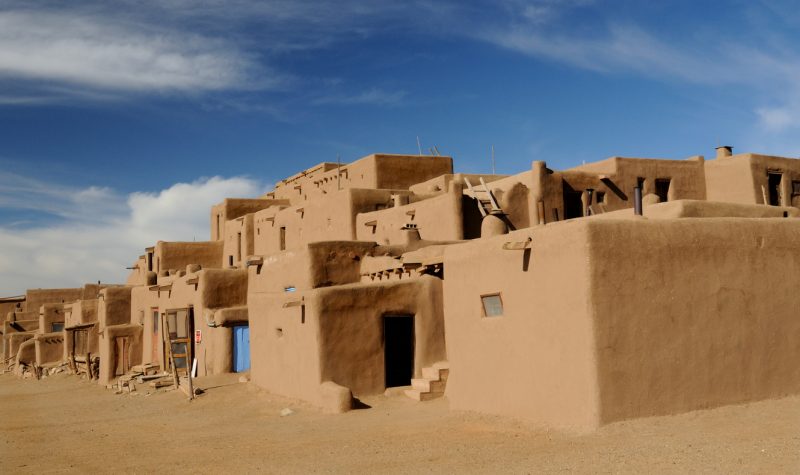
Because the structure was built by many different families each making their own home, there is little rhyme or reason to the design. In some parts, there are interior patios that are reached via ladders from the roof. In other parts, long, winding passageways from the outside take you to the interior.
The average home in the pueblo consists of two rooms. The outer room is used for living and sleeping and the inner one is used for cooking, eating, and storage. There is no connection between separate homes without going outside to get from one to the next.
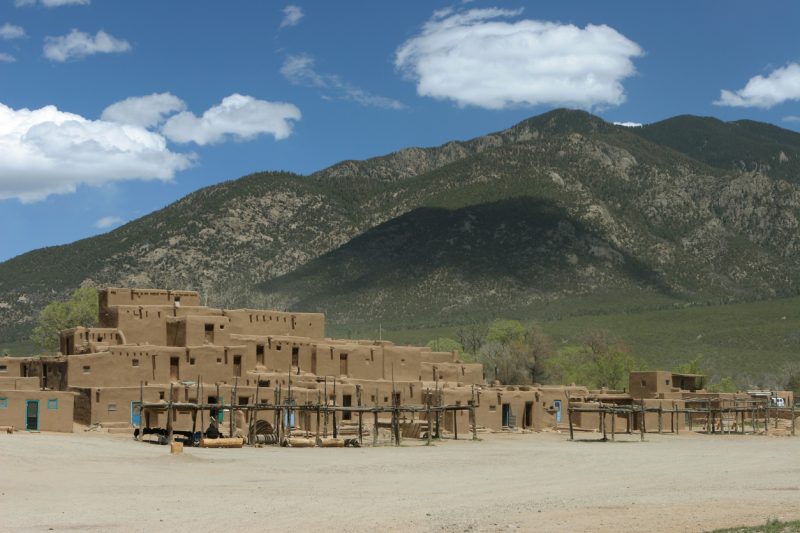
People living within the pueblo work in a variety of different professions, much like the people of any other community. While the majority of them are farmers, a number of well-known native artisans live and work at the complex. The black-on-black style of Native American pottery comes from here, as well as a distinct style of turquoise and traditional silver jewelry.
How This Structure Came to Be
Taos Pueblo is not the only Native American structure of its sort; there are 18 others in the southeastern United States that are still inhabited today. Taos Pueblo is the most famous. It is believed that the people of these pueblos were closely related in antiquity but, through time, went their separate ways and developed their own identities and customs. Those living in Taos Pueblo are thought to be the most secretive of the groups, though their pueblo is the most photographed building in the United States.
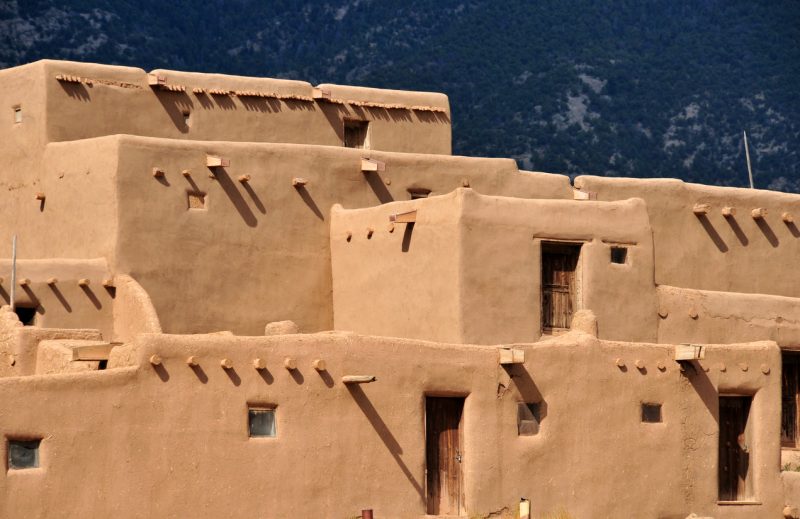
Before the building of the pueblos, the ancestors of these people lived in pits dug into the ground. It is thought that the inhabitants of Mesa Verde may have been amongst their ancestors. Some similarity in the construction of the pueblo and the cliff dwellings gives credence to this theory.
While there is no recorded history to give clarity to the construction of the pueblo, it is clear that it was built over much time. Originally, it may have consisted of only a few apartments located somewhere around the center of the current structure. As the children of those families grew and started their own families, they would build their own apartment and attach it to that of their parents. In this way, the structure grew and became more complex.
The roofs of the individual dwellings are flat, making them ideal for use as floors for those who choose to build above them. Wood poles running through the ceiling provide support to the adobe roof. As the rooms are relatively small, there are no huge spans that have to be supported.
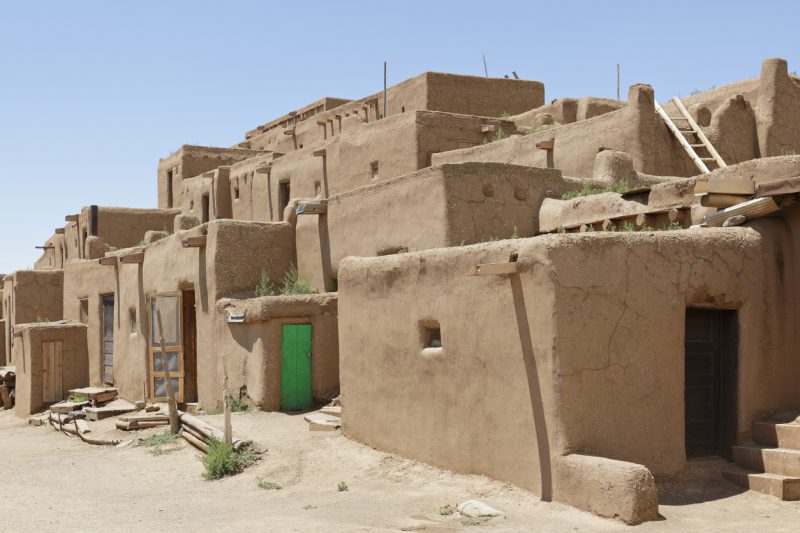
The pueblos were built not only to be dwellings but also as defensive structures. By collocating in one massive structure with stone (adobe) walls, the people produced an impressive-looking fortification that would have been puzzling to any potential attackers. As no other Native American groups lived in such structures, there wasn’t a cultural understanding of how to defeat them – different to Europe, where castle warfare was the norm.
The location of the pueblo was critical to its defensive purpose. All 19 of the pueblos are built on high ground, giving them an advantage over their attackers. The surrounding countryside was farmed by the inhabitants, much like the land around European castles, and provided them with food to eat.
Apartments on the outer edge of the pueblo were situated and constructed to aid defense. Firing arrows through windows and doorways gave defenders a distinct advantage over their attackers. The thick walls would stop arrows, and later bullets, and provide the defenders with effective shielding.
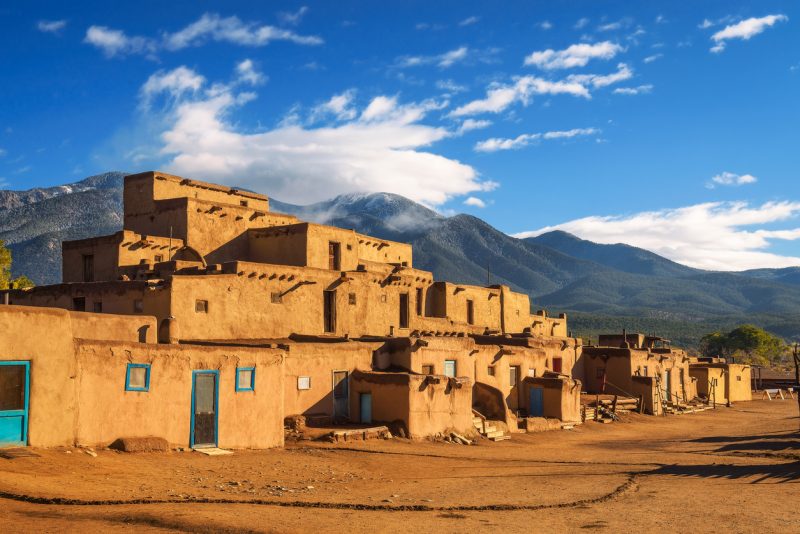
Today, the apartments have wooden doors and shutters over the windows – one of the very few influences of modern construction. However, the pueblo doesn’t have running water or electricity; they have declined this to keep their community accurate to their history.
Water for the community comes from the Rio Pueblo de Taos, a small stream that runs through the middle of the pueblo. This stream brings fresh water from the nearby Taos mountains. From a purely defensive point of view, this is one of the weaknesses of the complex.
A Pueblo As A Survival Shelter
Building a structure like the Taos Pueblo, albeit smaller, would be a great idea for a survival team building their retreat. By making one common structure, the team would gain the same defensive advantage that the original inhabitants of Taos Pueblo enjoyed. For further defense, a palisade or wall could be built around the outside either out of adobe or logs.
As a survival shelter, I imagine that any modern survival team would do whatever they could to get some sort of indoor plumbing and electricity, even if it was minimal. As a society, we are too addicted to our comforts to give them up easily.
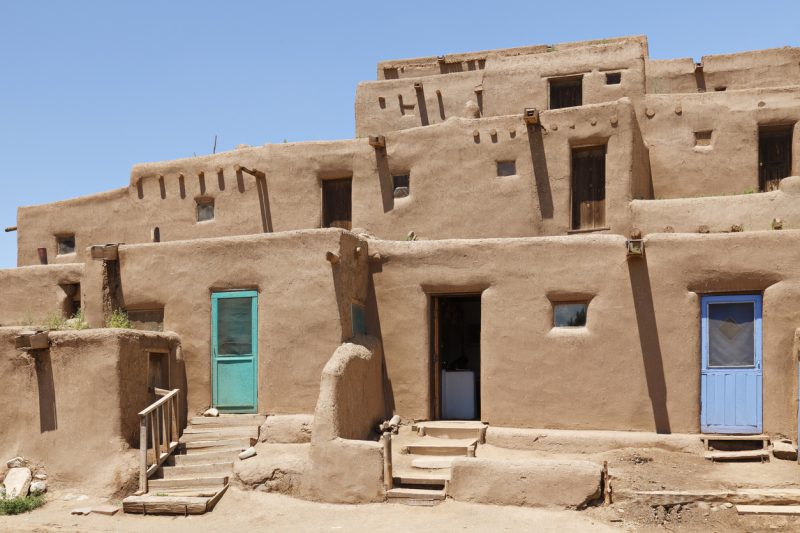
Such a shelter would be more energy efficient than individual dwellings, as each habitation would have one or two walls that were common with the adjoining apartments. This would help reduce the loss of heat through the walls. In addition, co-locating in such a way would make it easier to work together, especially in the case of group tasks such as night guards.
Common areas, such as clay ovens, could be built into the dwelling just as they are in Taos Pueblo. While I never found out if the ovens were considered community property or were run by individuals as their businesses, it was clear that there were not enough ovens for each family, or even extended family, to have their own.
Of course, living in such a structure with everyone so close together would require everyone to be extremely considerate of their neighbors. This is not the kind of place to have a neighbor who likes to play loud music late at night. But if the team can’t get along well enough to live in such tight proximity, they either need to work on their personalities or consider splitting the team up.





